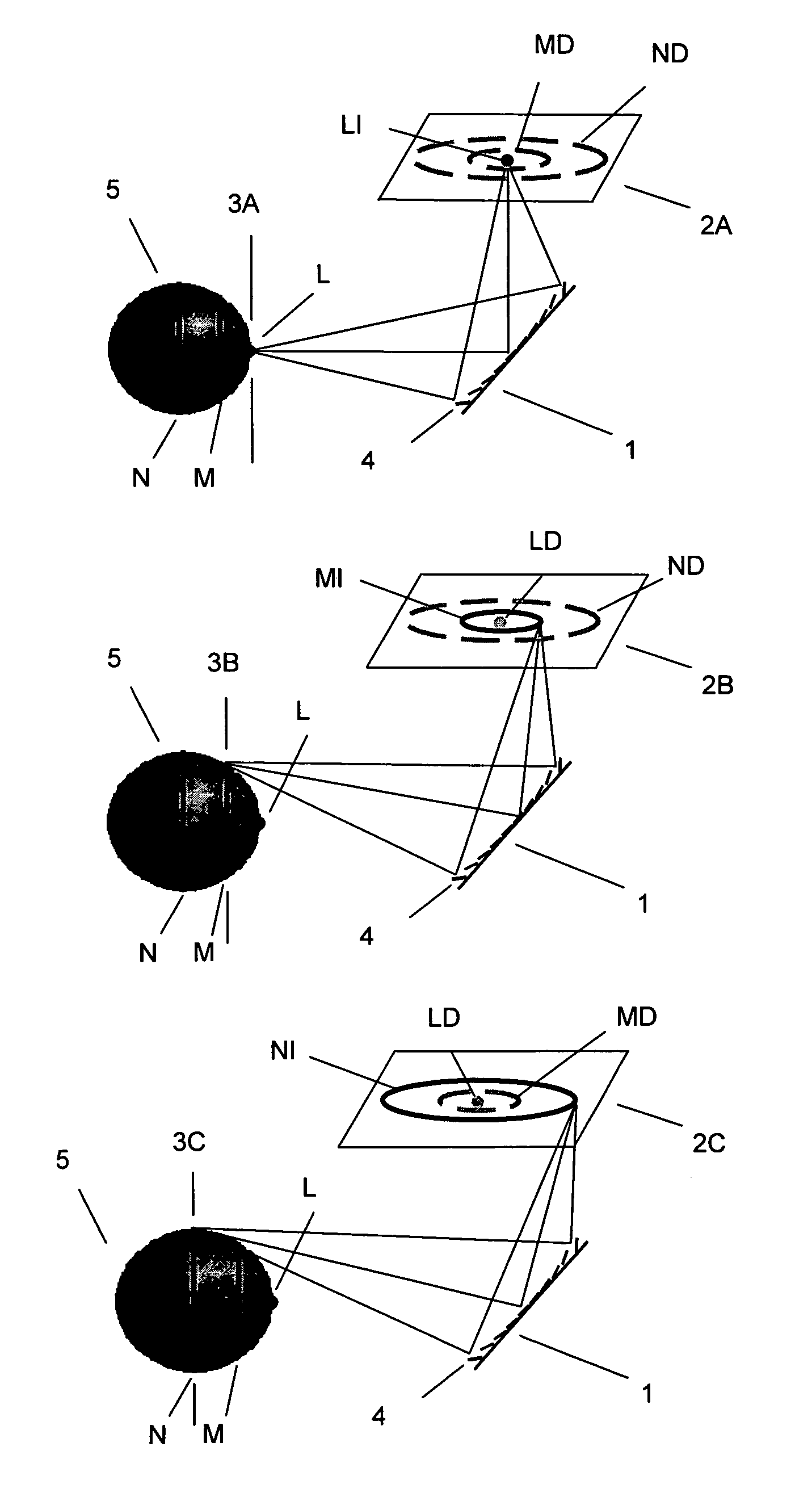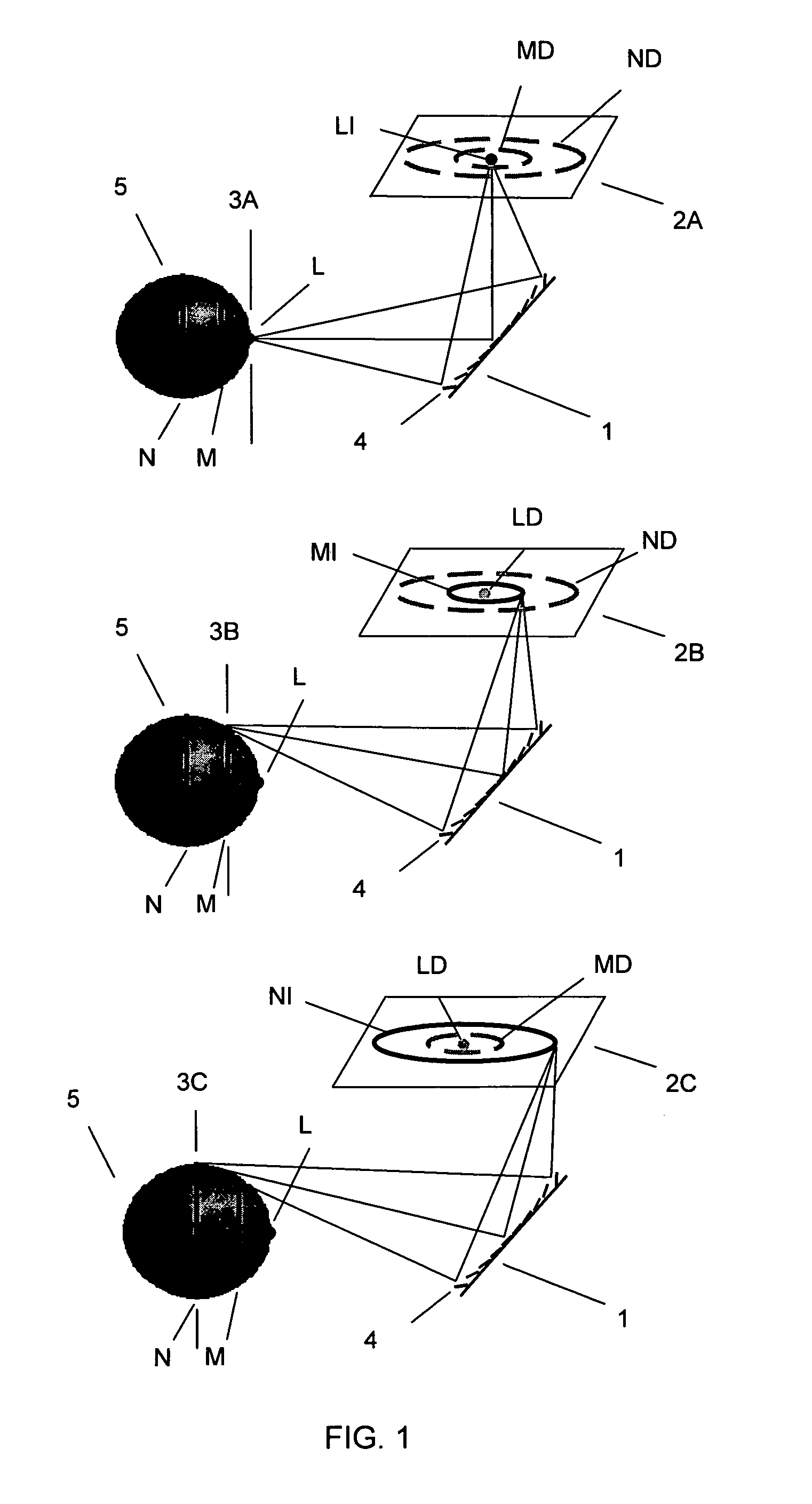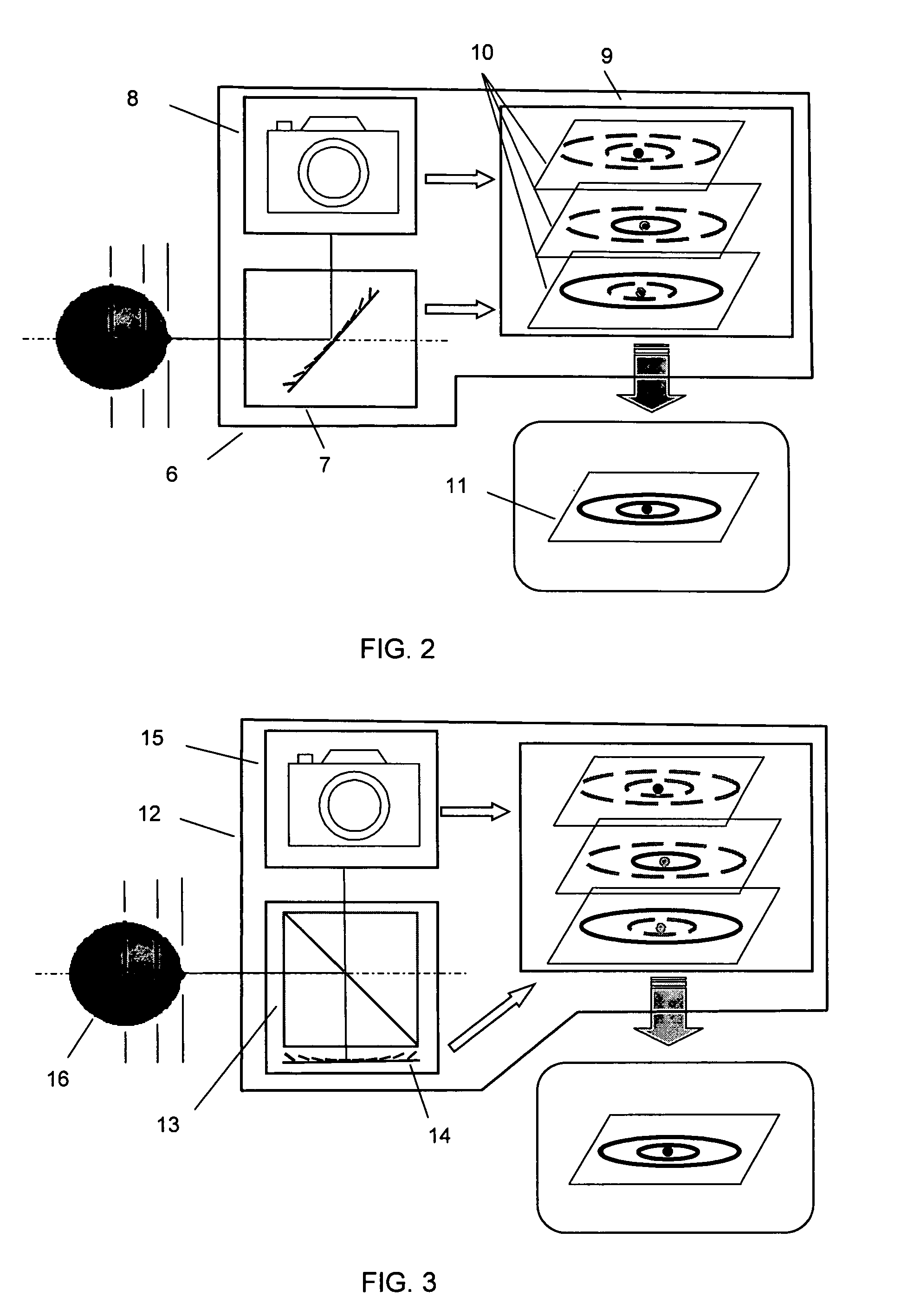Three-dimensional imaging device
a three-dimensional imaging and imaging device technology, applied in the direction of mirrors, instruments, mountings, etc., can solve the problems of limiting the depth resolution and the possible range of depth of the three-dimensional image, slow response time and complex driving mechanisms to control the relative position of the refractive lens, and slow response time typically on the order of hundreds of milliseconds
- Summary
- Abstract
- Description
- Claims
- Application Information
AI Technical Summary
Benefits of technology
Problems solved by technology
Method used
Image
Examples
Embodiment Construction
[0039]FIG. 1 shows how a micromirror array lens 1 gets original two-dimensional images 2A, 2B, 2C with different focal planes 3A, 3B, 3C. The micromirror array lens 1 includes many micromirrors 4. The focal length of the micromirror array lens 1 is changed by electrostatically and / or electromagnetically controlling each of the micromirrors 4. A focal length change of the micromirror array lens 1 changes the focal plane of the imaging system. Two-dimensional original images 2A, 2B, 2C are taken with the depth information which is obtained from the position of the focal plane. The original two-dimensional image 2A with the first focal plane 3A has in-focus image LI which is the image of the portion L of an object 5. Images MD, ND of portion M, N of an object 5 are defocused. Therefore, the image processing unit determines the in-focus pixels LI from the original two-dimensional images 2A. The focal plane 3A of the first original two-dimensional image 2A gives the depth information of ...
PUM
 Login to View More
Login to View More Abstract
Description
Claims
Application Information
 Login to View More
Login to View More - R&D
- Intellectual Property
- Life Sciences
- Materials
- Tech Scout
- Unparalleled Data Quality
- Higher Quality Content
- 60% Fewer Hallucinations
Browse by: Latest US Patents, China's latest patents, Technical Efficacy Thesaurus, Application Domain, Technology Topic, Popular Technical Reports.
© 2025 PatSnap. All rights reserved.Legal|Privacy policy|Modern Slavery Act Transparency Statement|Sitemap|About US| Contact US: help@patsnap.com



